What Kind of Chickens Lay Colored Eggs
5 chicken breeds that lay beautifully colored eggs.
Which hens lay white eggs? Or blue? Green? Chocolate coloured? And is there any such thing as a black chicken egg?
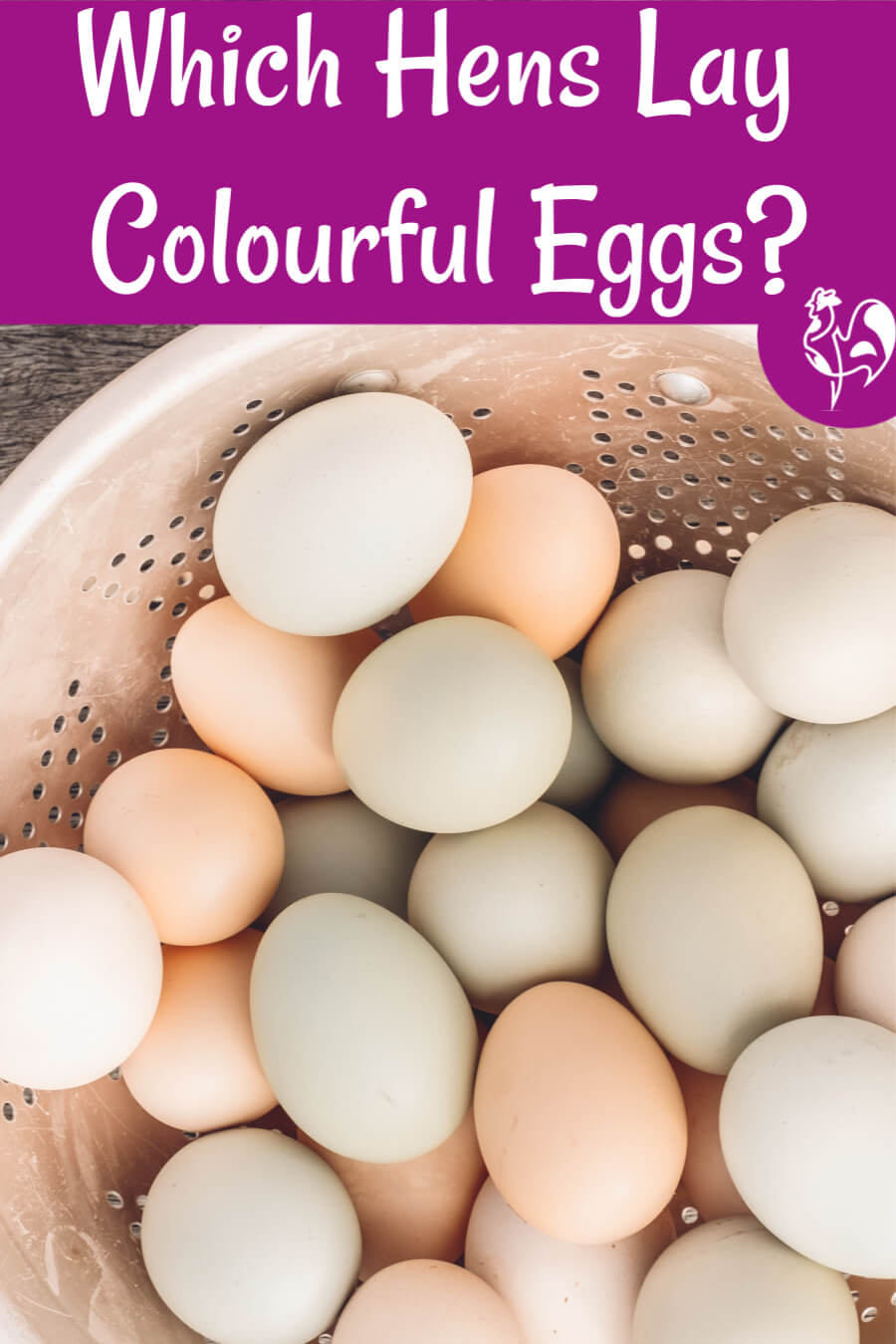
When you first have chickens, you tend just to be grateful for their delicious, nutritious eggs. The colour (US color) really isn't that important. It's the taste and the health benefits that matter.
As time goes on, though, you may well find yourself wanting a bit of a difference in your egg basket. A little colour to make it look pretty.
It's then you need to know more about chickens that lay different coloured eggs.
Here, I cover five of the most popular colours and the breeds which lay them.
But first, some background.
Why do hens lay different coloured eggs?
All eggs begin as white shells. The colour is a pigment added at different stages in the egg-forming process. Depending on where the pigment is added, the colour will either go all the way through the shell or be just on the surface.
The blue pigment, for example, is added right at the beginning, so blue shells are blue all the way through. Brown is added right at the end, so can be easily scratched off.
Green eggs start off as blue, so are blue inside the shell, and have brown added on top of blue at the end, so the outer shell is green.
White shelled eggs simply don't add any pigment at all.
Do a hen's earlobes tell what colour eggs she'll lay?
Sometimes, but it's not a good indicator. Egg colour is related to genetics. So is earlobe colour. But just because a hen has red earlobes she will not necessarily lay brown eggs.
The best indicator of egg colour is the breed of chicken.
Is the nutritional value of a coloured egg different from white?
No. Whatever the colour, the nutritional value of an egg is determined by what the hen is fed and whether she is caged or free to roam. Egg shell strength is determined by the amount of calcium available to her.
Colour has noting to do with it.
Chickens that lay brown eggs.
These are the eggs we all see every day in the supermarket shelves. They are all classed as "brown" but, like these eggs from my Red Star chickens, they vary in colour from a light cream to a darker brown.
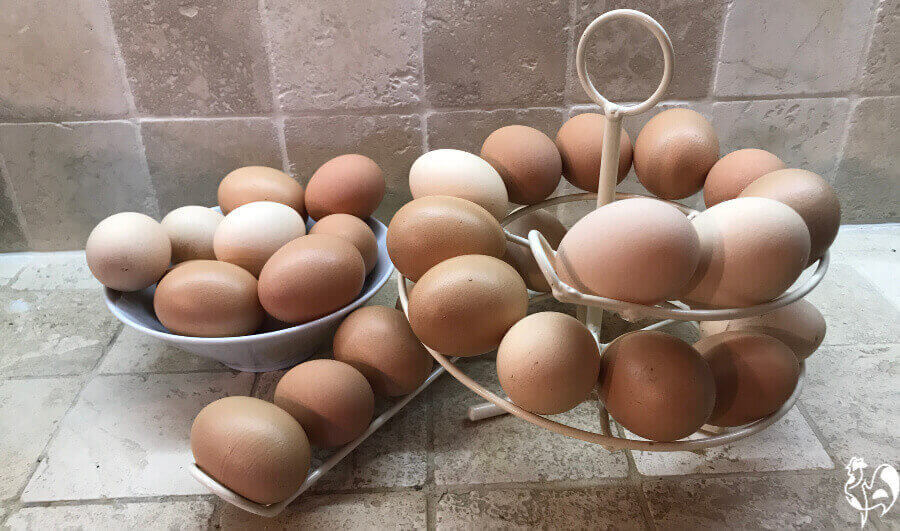 Brown eggs from my Red Star chickens, on my egg skelter.
Brown eggs from my Red Star chickens, on my egg skelter.
Red Stars, the common brown chicken, are bred as layers and are the most reliable egg producers ever. Mine will lay one egg a day, no matter what, and tend not to stop even when moulting.
And apart from that, they're funny, entertaining, great foragers and always curious.
A great place to start if you want plenty of nutritious eggs and you're satisfied with the "plain" brown colour.
Which personally, I think may be plain but is beautiful.
What chicken breeds lay chocolate brown eggs?
If you're looking for brown eggs which look more like chocolate than cream, there are two particular chicken breeds I'd suggest: the Black Copper Marans and the Welsummer.
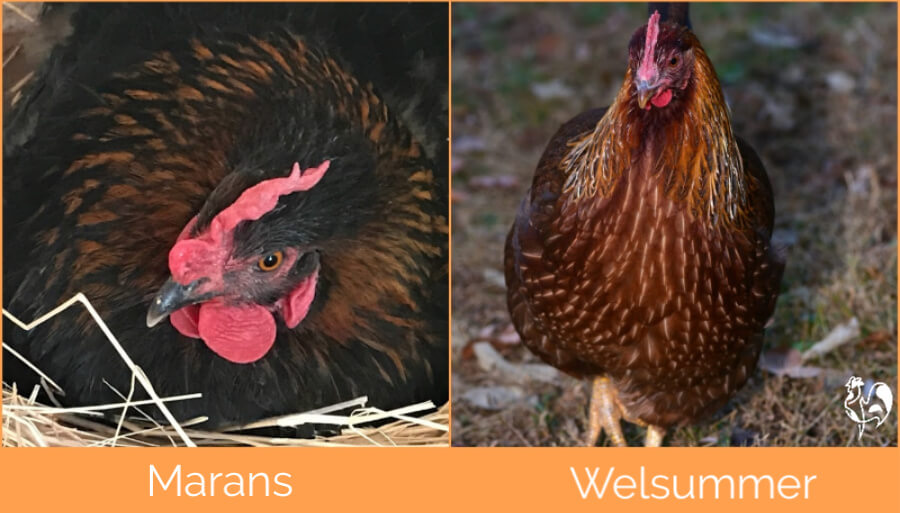 Two of my chocolate brown egg layers.
Two of my chocolate brown egg layers.
- The Black Copper Marans is a stunning looking chicken - the males even more so. They have pure black feathering which can look an iridescent green in the sun, with golden feathering around the neck. Their legs are feathered - if you're offered a hen without feathering she's not a true Marans. The Marans is a good forager; mine deal well with both the extreme heat and extreme cold of central Italy.
- The Welsummer tends to be very friendly and can go broody quite easily. The hens are reddish-brown with black specks, with black and brown tail feathers. Like the Marans, they are also good foragers on free range land. The hen will produce between three and four eggs a week.
The eggs.
- Marans eggs: the ultimate chocolate egg! They'll begin very dark, lighten a little during the season and can become even darker after the hen has moulted each year.
- The brown pigment is deposited immediately before laying and only on the outside of the egg. Inside, the shell is pure white. The darkness of the pigment makes these one of the most difficult eggs to candle when incubating.
- Welsummer eggs tend to be large, at 2 - 3oz and are a deep, rich reddish-brown, often referred to as terracotta. It's a very distinct colour from the Marans.
- They are sometimes speckled, and they're at their deepest colour when the hen first starts laying, becoming increasingly light with age.
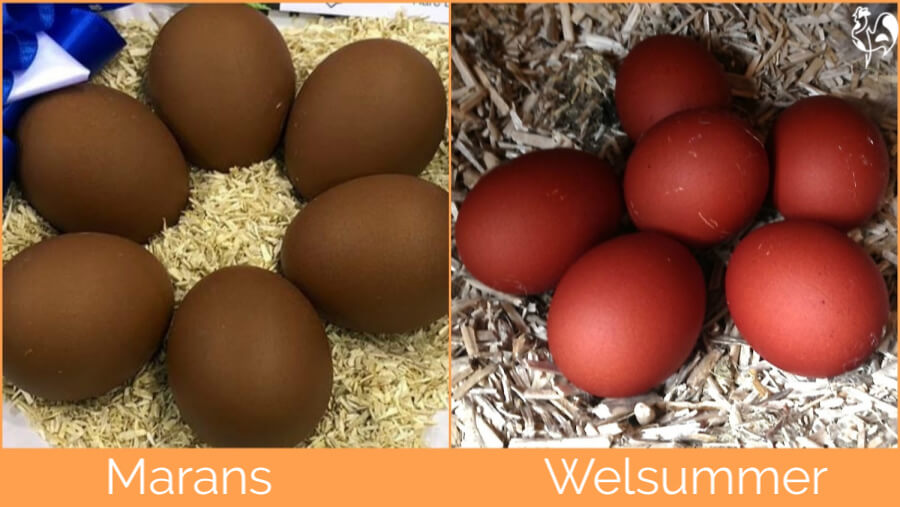 The Marans egg is a true brown, while the Welsummer is reddish-brown, also called terracotta.
The Marans egg is a true brown, while the Welsummer is reddish-brown, also called terracotta.
What chickens lay white eggs?
The white egg is often the most coveted in supermarkets. The public makes an assumption, probably based on myths handed down through generations, that white eggs are more nutritious.
Of course, there's no truth in that. Eggs raised on the same pasture and fed the same will be the same in terms of nutrition. Only the colour is different.
The chicken breed I'd recommend for the purest white eggs is one I always keep as part of my flock: the Livorno, or Leghorn.
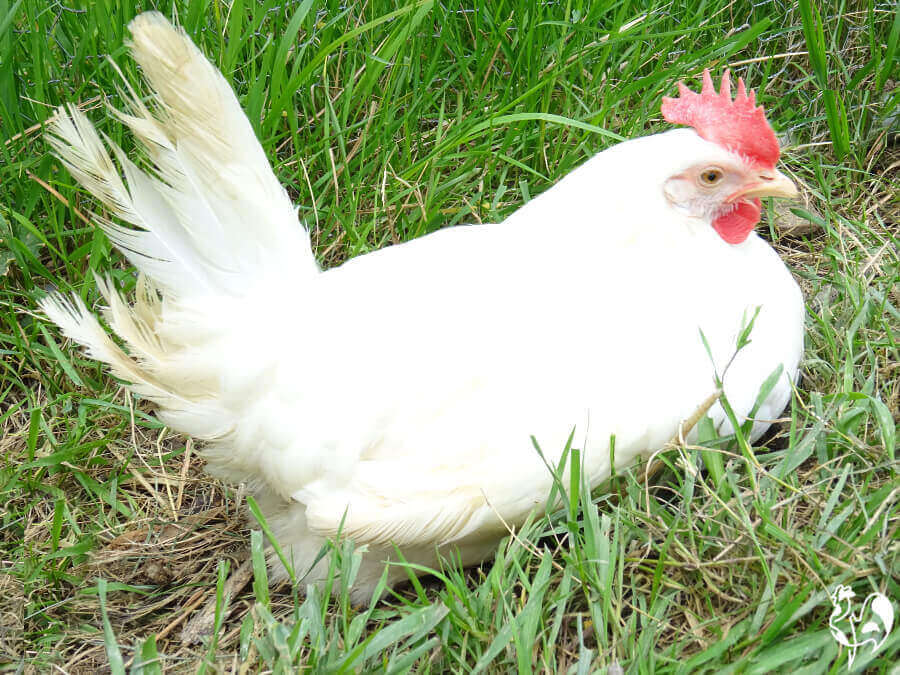 Lou-lou, one of my Livorno, or Leghorn, hens who lays pure white eggs.
Lou-lou, one of my Livorno, or Leghorn, hens who lays pure white eggs.
They're great foragers, and will cost less in feed than some other breeds because they supplement their diet with bugs, plants and weeds. Although they love to free range they're equally at home in small areas.
Drawbacks? They're not the friendliest of breeds, not what I'd recommend if you're looking for a pet chicken who'll sit on your porch with you. They're too busy eating healthily and making eggs!
But when it comes to laying, the Livorno is on a par with the Red Star. I get an egg a day from mine, regular as clockwork, and that's not unusual. The breed standard estimates around 300 eggs a year.
So if you're looking for an excellent layer of beautiful white eggs, you've just found her!
Chickens that lay blue eggs.
If you're looking for a calm, friendly hen who loves to forage, looks very cute and produces the loveliest pastel blue eggs, the crested cream Legbar has to be the chicken of choice.
Additionally, they're one of the breeds that can be sexed at hatch, so if you're ordering from a hatchery you'll be able to have confidence that you're getting hens, if that's what you want.
You'll just need to be a little careful within your flock, because they're so quiet and docile they tend to be picked on by more assertive breeds.
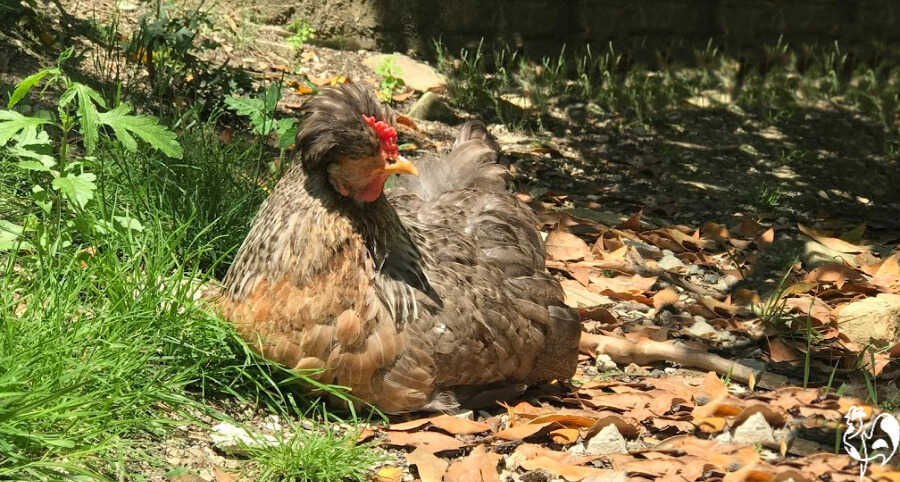 One of my cream crested Legbar hens taking the sun.
One of my cream crested Legbar hens taking the sun.
Legbars will start laying at around 24 weeks old, and in my experience will provide about four medium sized eggs a week, or 200 a year.
Where the pigment from brown eggs like the Marans is deposited on the shell just before laying, the pigment from the Legbar's blue eggs goes right through the shell, so it's as blue on the inside as on the outer shell.
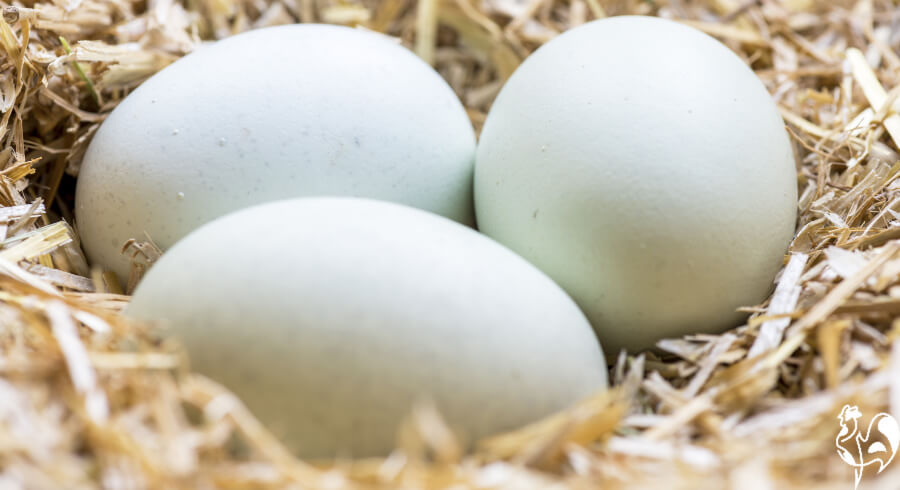 Don't expect a Legbar's eggs to be bright blue - they're more a subtle pastel shade.
Don't expect a Legbar's eggs to be bright blue - they're more a subtle pastel shade.
Which chickens lay green eggs? Meet the olive egger.
It's not an accepted breed, but a cross between a dark brown egg layer, like the Marans or Welsummer, with a blue layer like the cream crested Legbar. The eggy result, if you're lucky, will be dark green, the colour of olives.
Be aware though, especially if ordering through a hatchery, that the colour will depend on the breeding line and won't necessarily be a true green.
I've successfully mated a Black Copper Marans male with a cream crested Legbar hen, but sadly the only egg to hatch turned out to be a male.
He is very handsome, though!
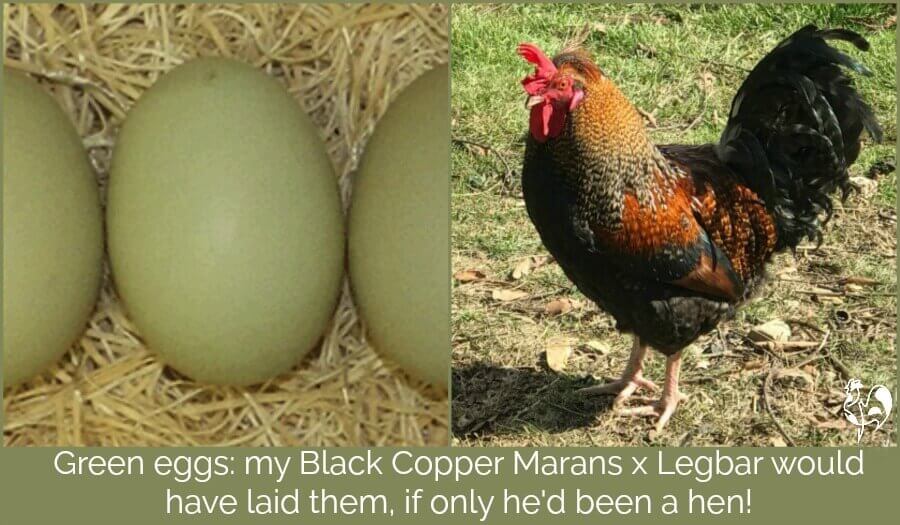
Do chickens lay black eggs?
You may have heard of the amazing black chicken breed: the Ayam Cemani. A true Cemani is a rare breed and will cost around $2,500.
See the resources section for reputable breeders in the US.
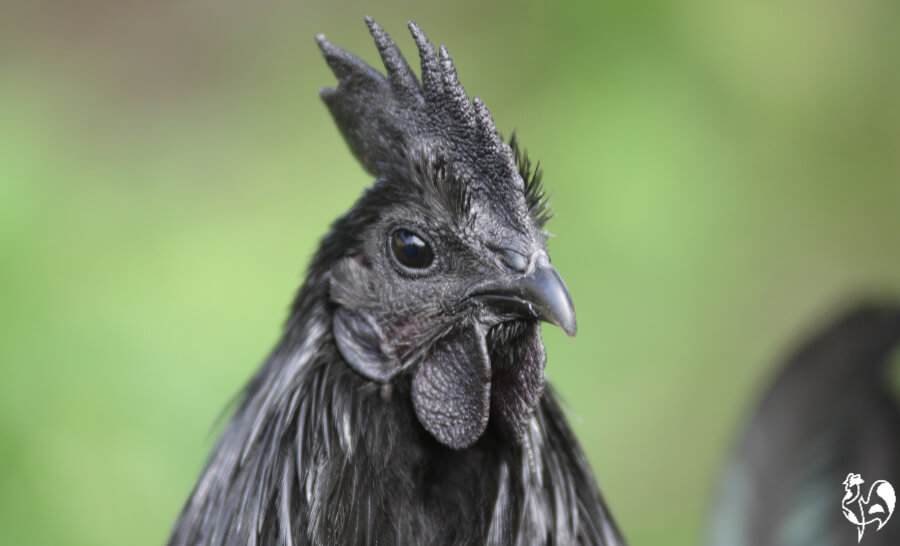
Sadly, there are a lot of fakes for sale on the internet. And many of them come with promises of black eggs.
But if you see a black egg for sale, don't be taken in. The Cemani does not lay black eggs, but a light pinky colour. This black egg...
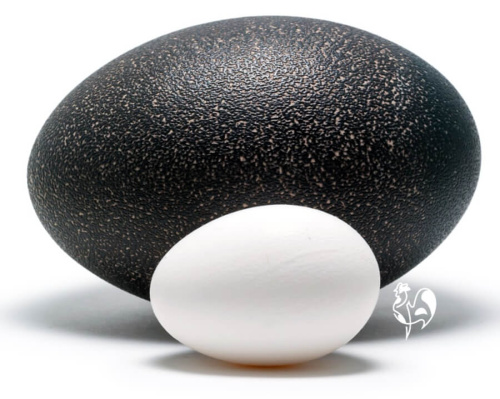 A black emu egg and a white chicken egg - the difference is obvious!
A black emu egg and a white chicken egg - the difference is obvious!
...is an emu egg, and it's the only fresh (i.e. not dyed) black egg there is.
The difference between it and the white chicken egg is obvious: it's huge! And its surface is pitted and rough, unlike the smooth chicken shell.
The fact is that there is no chicken breed that lays black eggs.
So if someone online tries to sell you a black egg at great cost, or if you see an image of a fresh black egg anywhere, rest assured - it was not laid by a chicken!
Enjoy adding different colored chicken eggs to your collection!
Here's a selection of mine, on my original, authentic egg skelter.
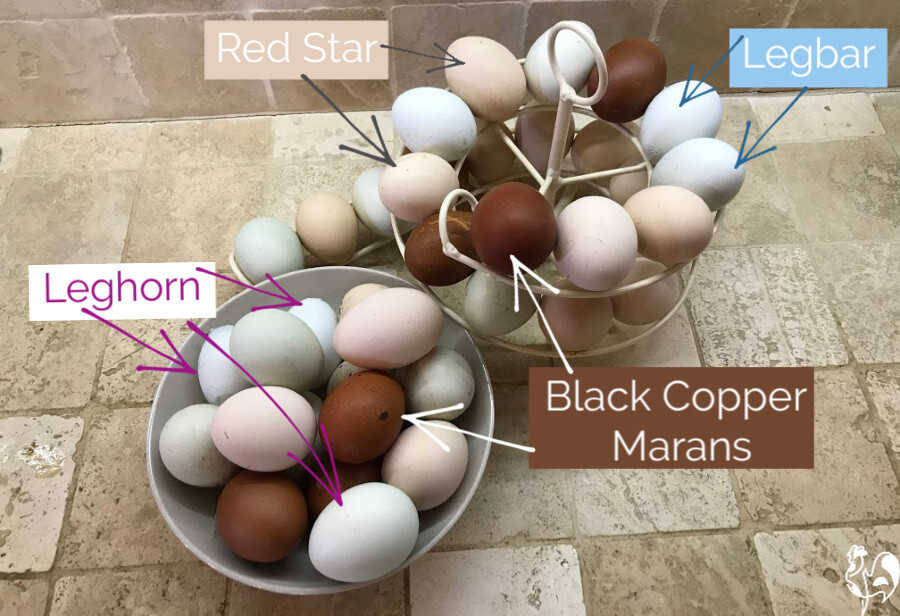 My egg skelter is always full of different coloured chicken eggs!
My egg skelter is always full of different coloured chicken eggs!
Resources.
Munn, D.: Why are hens' eggs different colors? Pub. Michigan State University, 2013.
Ayam Cemani Breeders Association, USA.
Legbar Club.
Leghorn Club (Facebook group).
The Livorno (Leghorn) Club itself unfortunately does not have a secure link, so I can't link to it here, but it will appear by doing a simple search.
Marans Club, USA.
Welsummer Club, UK.

What Kind of Chickens Lay Colored Eggs
Source: https://www.raising-happy-chickens.com/chickens-that-lay-colored-eggs.html




